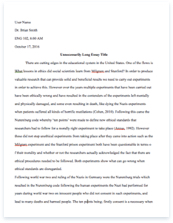PDA Simulation

- Pages: 3
- Word count: 698
- Category: Marketing
A limited time offer! Get a custom sample essay written according to your requirements urgent 3h delivery guaranteed
Order Now
Dealing with the investment procedures can help the company realize the most efficient ways to increase or maintain profit margin. Studying the key components of production factors together with the market information can help in creating decisions (Wadley 1).
On the purpose of creating a business strategy for PDA marketing, one of the most important indicators in terms of analyzing profitability measures is to know how the market is reacting to the availability of the product segments. For the PDA line up, the X5 and X6 models are in the forefront of inviting huge profitability outputs compared to X7 which is the youngest product line among the three. In this aspect, the main strategy will involve the dropping of model X7 from the market offerings of the company.
Practically, X7 has the smallest amount of performance and profitability sales which could only lead to non-performing status of the invested capital for its launch.
One way to rationalize X7 deletion from the production line is to look on the details from the very introduction of the simulation. The Financials info about the model has the lowest revenue value at only 50,000, at least a quarter that of X5 and X6. Another aspect to look for is the profitability margin of the model which is residing on the negative value from 2004 to 2005. This indicator has already proven the lost of investment capital which was allocated for the model’s production.
In terms of Market info, one primary factor to consider is the repeat sales numerical performance. X7 has the lowest compared to the other models which only account for about 48%. This is a far cry from X5 and X6 performance at 83% and 95% respectively. Apparently, the repeat sales factor can just be the best significant indicator about the performance of a retail brand since it actually reflects the possible projection sales for future marketing.
After deciding on dropping the X7 line, the importance of allocating funds to X5 and X6 models should be considered. Both models have performed very well from 2004 to 2005 with very minimal discrepancies on performance rates. Of course, the main advantage of X5 is its reputation of being affordable. This is in direct contrast to X6 which is almost double the price of the former. In any case, it may seem that customers who preferred X6 are actually after the performance while clients who bought X5 intended to have the basic features of a PDA. In this aspect, the allocation of funds can be referenced on how the market of the previous year received these models.
For the first year, an allocation for R&D was established at 75% and 25% in favor of X6. This is to sustain the ever demanding needs of clients which are actually looking for very indispensable devices. Although the allocation is high, the market price was set to $500 in order to maintain the customer base attractiveness of the product. On the other hand, X5 is maintained at $200 since this is the most effective way to capture more markets coinciding with its fewer funds in R&D. On second year round, using the same allocation, X6 sales dropped while maintaining the steady growth of X5. This is partly due to the minimal increase of market price for X6 even with high R&D allocation. Continuing up to the third, X5 needed to be dropped from the market so that the remaining items can optimize profit generation. Basically, the simulation adviser provided a “shakeout” status for X5 on the second year. As a result, the X6 model had a rebound on profits as illustrated on the graph.
Knowing the correct allocation for R&D and predicting the market sales can provide the best profit margin revenues. Although not always, a manufacturer can maximize its earnings while minimizing wastages of funds for production using effective investment allocations (Schneider 1).
Works Cited
Schneider, Craig. “R&D Spending Doesn’t Spell Profit.” CFO. 2005. 7 Feb 2008 <http://www.cfo.com/article.cfm/5014823?f=related>.
Wadley, Jared. “News Service University of Michigan.” 2007. 7 Feb 2008 <http://www.ns.umich.edu/htdocs/releases/story.php?id=6008>.










